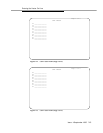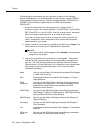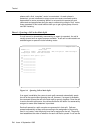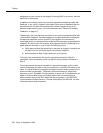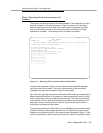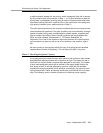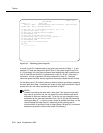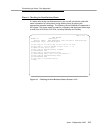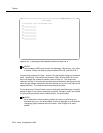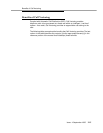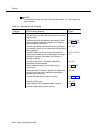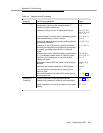
Constructing a Vector: One Approach
Issue 4 September 1995
2-11
a
medium
priority instead of a
low
priority, which is assigned if the call is queued
by the
queue-to main split
command in Step 1. It is a good practice to raise the
priority level in subsequent queuing steps in order to accommodate callers who
have been holding the line for a period of time. (We could have even assigned a
high
priority instead of just a
medium
priority in Step 5.)
The
calls-queued
condition is one of seven conditions that can be included in the
check-backup split
command. The other conditions are
unconditionally, average
speed of answer (rolling-asa), available agents, staffed agents, expected wait
time
and
oldest call waiting
. Some of these conditions are only available with
G3V4 and later releases; see Appendix L, "V4 Feature Availability" for
information. As is true for the
queue-to main split
command, the
check-backup
split
command can queue a call at one of four priorities:
low, medium, high
or
top
.
We are including a queuing step within the loop, thus giving the call repeated
opportunities to queue (if necessary). The call queues to split 7 only once.
Phase 5: Checking the Queue Capacity
It is a good practice to check the main split queue for the number of calls already
queued before allowing another call to queue to the split. The reason for this is
that there is a limited number of queue slots assigned to each split. The number
of such slots assigned to each split is defined in the queue length field on the
hunt group screen. A call that attempts to queue to a split with no available
queue slots cannot be queued to that split and, accordingly, the
queue-to main
split
command fails. Vector processing would then continue with the next vector
step. The following vector contains provisions for checking queue capacity:



